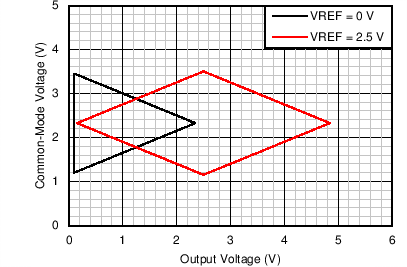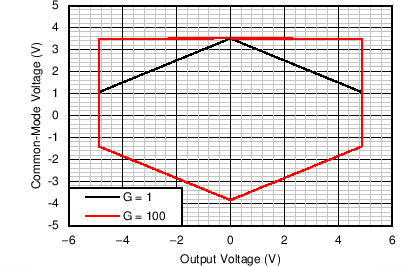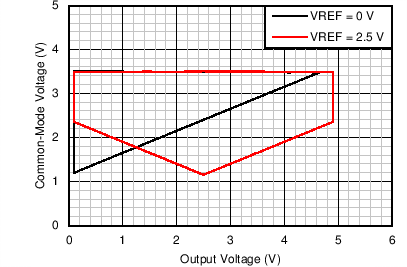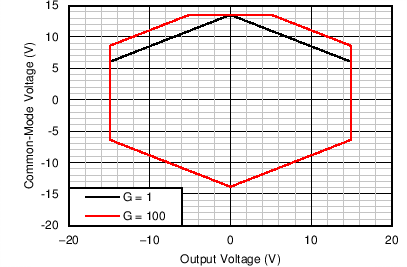SBOS792A August 2017 – January 2018 INA828
PRODUCTION DATA.
- 1 Features
- 2 Applications
- 3 Description
- 4 Revision History
- 5 Pin Configuration and Functions
- 6 Specifications
- 7 Detailed Description
- 8 Application and Implementation
- 9 Power Supply Recommendations
- 10Layout
- 11Device and Documentation Support
- 12Mechanical, Packaging, and Orderable Information
Package Options
Mechanical Data (Package|Pins)
- D|8
Thermal pad, mechanical data (Package|Pins)
Orderable Information
7.3.3 Input Common-Mode Range
The linear input voltage range of the INA828 input circuitry extends within 2 Volts of both power supplies and maintains excellent common-mode rejection throughout this range. The common-mode range for the most common operating conditions are shown in Figure 55, Figure 50, and Figure 51. The common-mode range for other operating conditions is best calculated using the INA common-mode range calculating tool. The INA828 device can operate over a wide range of power supplies and VREF configurations, thus providing a comprehensive guide to common-mode range limits for all possible conditions is impractical.

| VS = 5 V, G = 1 |

| VS = ±5 V, VREF = 0 V |

| VS = 5 V, G = 100 |

| VS = ±15 V, VREF = 0 V |